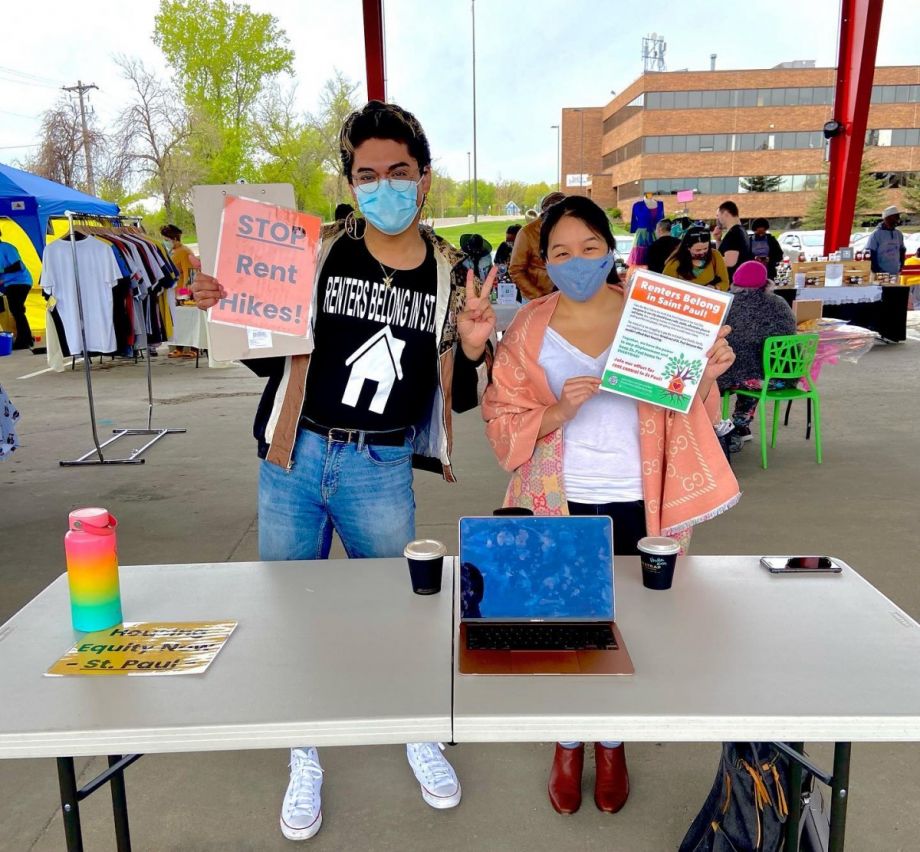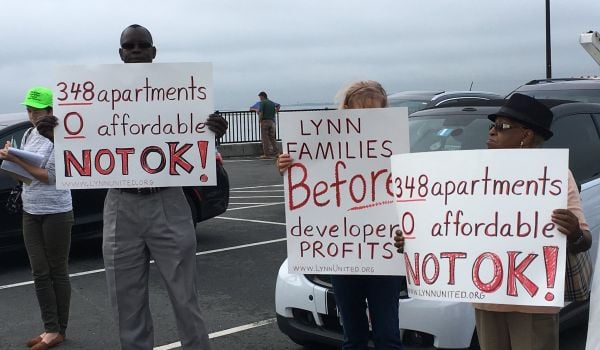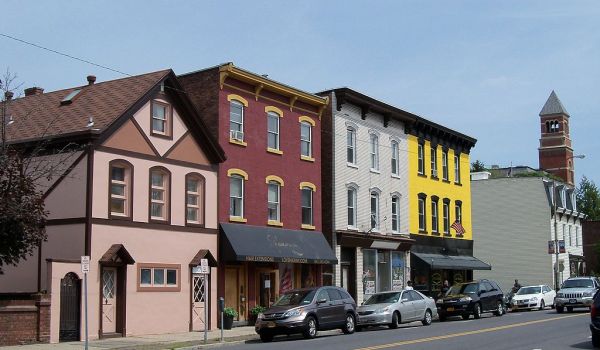They sprawled out across the city, going door-to-door for weeks, through cool days in March and a record-setting heatwave in June. They persevered and, last month, a coalition of community activists and organizers finally reached their goal: delivering over 9,100 signatures to the elections office in St. Paul’s Ramsey County in an effort to get rent stabilization on the upcoming November ballot.
If approved by voters, the policy would limit rent increases for all rental units across the city to 3% over a 12 month period. This is an effort by Housing Equity Now St. Paul (HENS), a coalition of community and neighborhood groups, to curb the displacement they see happening in Minnesota’s capital city. Over half of St. Paul residents are renters and the majority of renters are people of color. The Twin Cities region accounts for 76% of BIPOC households in the state, only 40% of them are homeowners compared to 75% of white households.
St. Paul’s Frogtown neighborhood, a largely Hmong community, is one of the city’s densest renter neighborhoods, which is why the Frogtown Neighborhood Association is a HENS member. “It’s where we live and work and play,” says Danielle Swift, the anti-displacement community organizer at the Frogtown Neighborhood Association. “We’re organizing in our own communities most of the time. This is what we experience ourselves. It affects our family members and our immediate neighbors.”
For Swift and company, rent stabilization has been long overdue.
“Historically in St. Paul, we’ve seen the displacement of community members, specifically Black people, in the city,” she says, referring largely to the destruction of the Rondo community when I-94 was constructed in the 1950s and ‘60s. “We’re seeing this happen all over again,” Swift adds, noting the development of the light rail’s Green Line, Allianz Field, and future development plans for the once minority business-filled Midway Shopping Center that have helped cause rental prices and property taxes to skyrocket.
Tackling issues like these isn’t new to the coalition. Many HENS members have been criss crossing with each other while working on various other equity issues across the metro area for years. When the City of St. Paul passed a series of tenant protections last year (which are currently held up in court and likely to be rescinded), several St. Paul-based organizations realized that it was time for a St. Paul-specific housing coalition, and HENS was formed.
The group began doing community engagement work to figure out how the community felt about the recently passed tenant protections, questions they had about them, and how they could be improved upon. “The question we got most often was ‘Is there anything in the protections that prevents my rent from doubling or rising by hundreds of dollars at a time?’” recalls Tram Hoang, a policy advocate at The Alliance, a HENS member. “The tenant protections are great, but it became clear that something was missing.”
That’s when HENS began looking into rent stabilization. “Even as policymakers ourselves, we were surprised to learn that over 180 cities already have rent stabilization in some form,” Hoang says. To devise the policy they would ultimately propose, HENS dissected the strengths and weaknesses of various rent stabilization approaches and looked at what was possible in St. Paul.
Minnesota has a law that prevents cities from instituting rent controls unless it’s through a ballot initiative, so the path to rent stabilization had to be through the ballot box. “That actually really excited us,” Hoang says. “We’re actually really tired of having to persuade seven council members who are not necessarily representative of the people we’re accountable to”—communities of color.
“This isn’t about freezing rents because we recognize that, in our country, housing is a good and the price changes,” Hoang explains. “We’re not here to freeze rent, but we want to make sure the rate that rent changes is something that low-wealth BIPOC renters can … keep up with to stay housed.”
The University of Minnesota’s Center for Urban and Regional Affairs published a study earlier this year, finding that the average rent increase in St. Paul’s twin city across the river, Minneapolis, was 2.7% from 2013 to 2018. “That really stood out to us,” Hoang says, adding that most of the renters they talked to felt like that was reasonable. In St. Paul, the median rents for two- and three-bedroom rentals have increased by 4% and 8% respectively since 2020. The median cost of one bedroom rentals has remained the same since last year.
Another notable element is that the proposal allows for exceptions to the 3% rule. If passed, the new policy would mandate that the city set up a process for determining exceptions, something Hoang trusts the city to do appropriately.
On June 23, HENS was informed that they collected 5,592 verified signatures, well over the 4,958 necessary to get rent stabilization on the November ballot.
Moving forward, , HENS is now focused on get out the vote efforts and combating the landlord lobby. “We know from seeing these battles in other states and cities that the landlord lobbies turned out money and misinformation,” Hoang says. “A lot of that misinformation is targeted at people who are reliably voters—homeowners. It’s something we’re going to have to deal with.”
Hoang says that combatting the landlord lobby is likely going to include more landlords. “Our allied homeowners and property owners group is small but growing,” she says of supporters who feel like a 3% increase is plenty to cover rising costs and are comforted by the fact that there is a process for exceptions to the limit should they be necessary. “As much as we want renter voices centered, we also want the voice of allied owners.”
This article is part of Backyard, a newsletter exploring scalable solutions to make housing fairer, more affordable and more environmentally sustainable. Subscribe to our weekly Backyard newsletter.

Cinnamon Janzer is a freelance journalist based in Minneapolis. Her work has appeared in National Geographic, U.S. News & World Report, Rewire.news, and more. She holds an MA in Social Design, with a specialization in intervention design, from the Maryland Institute College of Art and a BA in Cultural Anthropology and Fine Art from the University of Minnesota, Twin Cities.
Follow Cinnamon .(JavaScript must be enabled to view this email address)


















